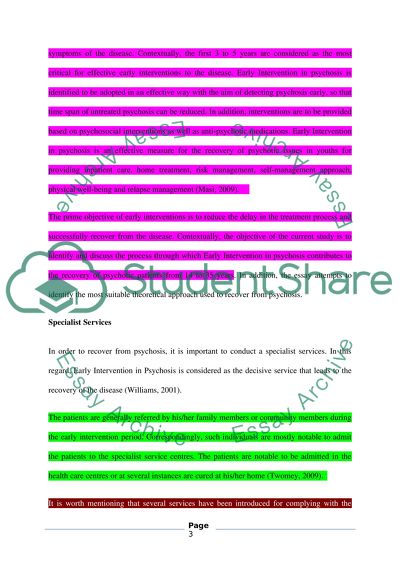Cite this document
(“How Does Early intervention in psychosis Service User Recovery An Essay”, n.d.)
How Does Early intervention in psychosis Service User Recovery An Essay. Retrieved from https://studentshare.org/nursing/1695866-how-does-early-intervention-in-psychosis-service-user-recovery-an-in-depth-study-of-one-specialist-service-the-referral-systems-admissions-and-assessment-processes-therapeutic-approaches-and-interventions-and-links-to-other-health-and-social-care-ser
How Does Early intervention in psychosis Service User Recovery An Essay. Retrieved from https://studentshare.org/nursing/1695866-how-does-early-intervention-in-psychosis-service-user-recovery-an-in-depth-study-of-one-specialist-service-the-referral-systems-admissions-and-assessment-processes-therapeutic-approaches-and-interventions-and-links-to-other-health-and-social-care-ser
(How Does Early Intervention in Psychosis Service User Recovery An Essay)
How Does Early Intervention in Psychosis Service User Recovery An Essay. https://studentshare.org/nursing/1695866-how-does-early-intervention-in-psychosis-service-user-recovery-an-in-depth-study-of-one-specialist-service-the-referral-systems-admissions-and-assessment-processes-therapeutic-approaches-and-interventions-and-links-to-other-health-and-social-care-ser.
How Does Early Intervention in Psychosis Service User Recovery An Essay. https://studentshare.org/nursing/1695866-how-does-early-intervention-in-psychosis-service-user-recovery-an-in-depth-study-of-one-specialist-service-the-referral-systems-admissions-and-assessment-processes-therapeutic-approaches-and-interventions-and-links-to-other-health-and-social-care-ser.
“How Does Early Intervention in Psychosis Service User Recovery An Essay”, n.d. https://studentshare.org/nursing/1695866-how-does-early-intervention-in-psychosis-service-user-recovery-an-in-depth-study-of-one-specialist-service-the-referral-systems-admissions-and-assessment-processes-therapeutic-approaches-and-interventions-and-links-to-other-health-and-social-care-ser.


